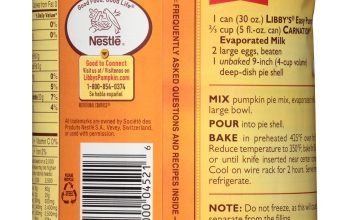Landscape Design and Uses

Perennial plant with purple flowers – Perennial purple flowering plants offer a versatile and striking addition to any garden design, providing continuous color and texture throughout the growing season. Their adaptability allows for creative integration into diverse landscape styles, enhancing both visual appeal and overall garden harmony. Careful consideration of plant height, bloom time, and color combinations can transform a garden space.
The vibrant hues of purple in a perennial garden are simply captivating, offering a long-lasting display of beauty. Choosing the right plants for continuous color is key, and deciding what to plant next after your annuals have faded is crucial. For a stunning, low-maintenance solution, check out this helpful guide on after annual flowers what to plant nest to ensure your purple perennial beauties thrive for years to come.
Think of the rich shades of salvia or the delicate blooms of lavender – a purple paradise awaits!
Imagine a sun-drenched border garden overflowing with vibrant hues. Two distinct purple perennials dominate the scene: tall, stately Salvia ‘May Night’ with its deep indigo spires forms a dramatic backdrop. Nestled at its base, a profusion of low-growing, lavender-hued Nepeta ‘Walker’s Low’ creates a soft, billowing carpet of color and fragrance. The Salvia’s vertical lines contrast beautifully with the Nepeta’s cascading form, creating visual interest and depth.
Interspersed amongst them are silvery-leaved Artemisia, providing textural contrast and highlighting the purple blooms. A rustic stone pathway winds through the planting, leading the eye deeper into the garden, while a weathered wooden bench invites relaxation amidst the floral splendor. The overall effect is one of abundant, natural beauty, combining structure and informality.
Purple Perennials in Different Garden Styles
Perennial purple flowering plants readily adapt to various garden aesthetics. In a cottage garden setting, their informal, abundant blooms create a sense of charming spontaneity. Plants like Lavender (Lavandula angustifolia), with its delicate purple spikes and intoxicating fragrance, are quintessential cottage garden additions. These can be paired with other soft purple flowering plants, like Catmint, for a relaxed, informal feel.
In contrast, a formal garden benefits from the structured elegance of purple perennials like Delphiniums, their tall, stately flower spikes creating vertical lines and a sense of order. Careful placement and repetition of these plants, perhaps alongside neatly clipped boxwood hedges, emphasize the garden’s formal design. Rock gardens, with their rocky, well-drained environments, are well-suited to drought-tolerant purple flowering perennials such as Sedum ‘Purple Emperor’, whose fleshy purple leaves and late-season blooms add color and texture to this type of garden.
Suitability of Purple Flowering Perennials for Container Gardening
Three popular purple flowering perennials demonstrate varying degrees of suitability for container gardening: Lavender, Calibrachoa, and Salvia. Lavender, while beautiful, can be somewhat challenging in containers due to its need for excellent drainage and a preference for well-draining soil. Overwatering is a significant risk, leading to root rot. Calibrachoa, a smaller, more compact plant, thrives in containers.
Its trailing habit makes it ideal for hanging baskets or window boxes, providing a cascade of purple blooms. Salvia, depending on the variety, can be successfully grown in containers, provided they are of sufficient size to accommodate the plant’s root system. Larger varieties will need larger containers to prevent root-bound conditions.
Propagation and Gardening Techniques

Successfully propagating and cultivating perennial purple flowering plants hinges on understanding their specific needs and employing appropriate techniques. The choice of propagation method significantly impacts the plant’s health, growth rate, and overall success. Careful consideration of the plant’s characteristics and your local climate is crucial for optimal results.
Propagation by Division
Division is a common and effective method for propagating many perennial purple flowering plants. This technique involves separating a mature plant into smaller, independent sections, each with its own roots and shoots. This allows for easy multiplication of desirable plants while maintaining their genetic characteristics. The following steps Artikel the division process:
- Preparation: Select a healthy, mature plant that has established itself well in the garden. Ideally, choose a plant that has been in the ground for at least two to three years and is showing signs of vigorous growth.
- Digging: Carefully dig around the base of the plant, loosening the soil to expose the root system. Try to keep as much of the root ball intact as possible to minimize stress on the plant.
- Separation: Gently separate the root ball into smaller sections, each with several healthy shoots and a good portion of roots. A sharp knife or spade can be used to cleanly divide the plant if necessary. Ensure each division has a well-developed root system.
- Replanting: Prepare planting holes that are slightly larger than the root balls of the divisions. Plant the divisions at the same depth they were originally growing, ensuring the crown of the plant is at or slightly above the soil surface. Gently firm the soil around the roots.
- Watering: Water the newly planted divisions thoroughly to help them settle in and establish their root systems.
Optimal Planting and Division Times, Perennial plant with purple flowers
The best time to plant and divide perennial purple flowering plants varies depending on the specific plant species and the climate zone. Generally, spring or fall are the most favorable times. Spring planting allows the plants to establish themselves before the heat of summer, while fall planting gives them time to develop roots before winter. In milder climates (USDA zones 7-10), fall planting may be preferable, while in colder climates (USDA zones 3-6), spring planting is often recommended.
Specific recommendations for individual species should be consulted.
Comparison of Propagation Methods
Several methods exist for propagating perennial purple flowering plants, each with its advantages and disadvantages.
| Propagation Method | Advantages | Disadvantages |
|---|---|---|
| Seed | Produces many plants; genetically diverse offspring; relatively inexpensive. | Slower growth rate; may not be true to the parent plant; requires more time and effort. |
| Division | Quick and easy; plants are true to the parent; faster establishment. | Requires a mature plant; may not be suitable for all species; can damage the parent plant if done improperly. |
| Cuttings | Can be used to propagate plants that are difficult to divide; relatively quick propagation method. | Lower success rate than division; requires specific techniques and conditions; not all species propagate well from cuttings. |
Detailed FAQs: Perennial Plant With Purple Flowers
What is the best time to fertilize purple perennials?
Early spring is generally the best time, providing nutrients for strong growth and abundant blooms. Use a balanced fertilizer formulated for flowering plants.
How do I deal with leggy purple perennials?
Pinch back the stems regularly to encourage bushier growth and prevent them from becoming leggy. Deadheading spent flowers also helps.
Can I grow purple perennials in pots?
Many purple perennials thrive in containers, provided the pot is large enough and well-draining. Choose dwarf or compact varieties for smaller pots.
What are some common diseases to watch out for?
Powdery mildew and fungal leaf spots are common. Ensure good air circulation and avoid overhead watering to prevent these issues.








